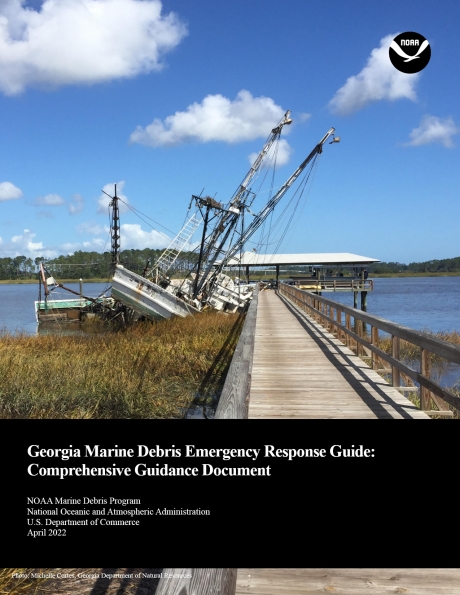Hurricanes, typhoons, earthquakes, and tsunamis are among nature's most powerful and destructive events, and when these natural disasters strike, they can create massive amounts of debris. That’s why NOAA's Marine Debris Program, within the Office of Response and Restoration, is participating in National Preparedness Month and highlighting NOAA technology, tools, and resources created to help prevent and respond to disaster-generated marine debris.
To respond to impacts from natural disasters, the Marine Debris Program uses NOAA’s specialized tools and technologies:
Using Mapping Technology to Aid Marine Debris Responses
The Environmental Response Management Application is a web-based mapping tool that helps emergency responders and environmental resource managers deal with large-scale incidents, such as storm-generated debris, that may negatively impact our coastal environment. ERMA® connects users with localized environmental information that is critical to marine debris response. ERMA integrates both static (unchanging) and real-time data, such as maps, ship locations, weather, and ocean currents, in a centralized format. After a large storm event, NOAA often collects high resolution photographs of the impact area. Those photographs are available through the application to assist emergency managers with making critical response decisions. ERMA is also used to provide the common operational picture for local, state, and federal responses to large-scale disasters so that many organizations can share information using one centralized tool.
During the 2020 and 2021 hurricane seasons, ERMA was used in command posts to show the location, condition, and response status of vessels sunk or stranded by the hurricanes. Pollution and debris information could be seen at a glance using the ERMA Dashboards, which allowed the incident command staff to efficiently direct operations focused on vessels that were or could become a pollution threat. OR&R team members also reviewed NOAA imagery to locate and track debris in ERMA. Additionally, the marine debris targets found in the NOAA imagery were shared with the federal agencies responsible for removing debris from coastlines and near-shore waters.
Decision Making Tools Guide U.S. States and Territories During Marine Debris Emergency Responses
Disaster debris following a natural disaster can be overwhelming and poses many challenges. Large amounts of debris can damage the natural environment, hurt wildlife, and make waterways dangerous. To aid regional responses, the program works with states and territories, cities, and counties to prepare ahead of time by developing marine debris emergency response guides. Inside each guide is a debris response decision tool to assist emergency agencies in understanding who does what when responding to marine debris after disasters. The guides provide maps, both in print and also available online through ERMA, that show jurisdictions and authorities, which agencies, such as the U.S. Coast Guard, incorporate into some of their Area Contingency Plans. Guides have been published for 12 coastal states and one U.S. territory, with more guides currently in production.
Although NOAA has a great set of tools and technology to respond to natural disasters, preparation is important to reduce the threat of marine debris. The best way to be prepared for tsunamis, typhoons, and hurricanes is to understand how these events can impact the places where you live and work. Please take a few minutes to watch these engaging videos that explain how tsunamis and hurricanes work and provide great tips on staying safe. By using the storm preparedness fact sheet and other resources provided by the NOAA Marine Debris Program, visiting the National Hurricane Center website, and preparing before the event, you are one step closer to recovering from the disaster.


